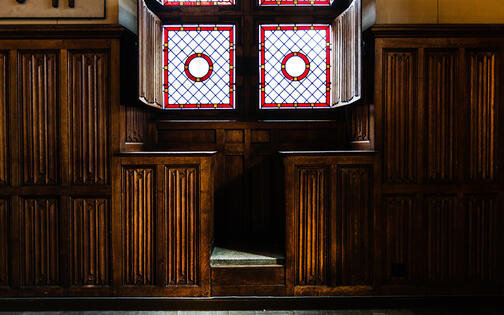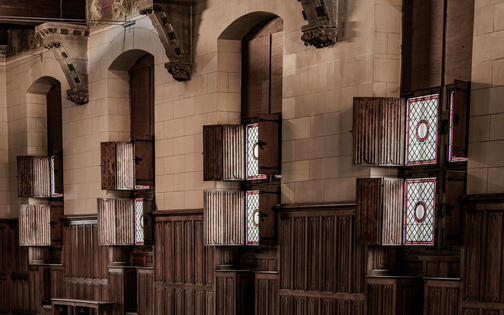The Cloth Hall
By the time construction commenced on the Cloth Hall, the cloth industry was already past its prime. A lack of funds meant that only seven of the planned 11 façade surfaces were built. The building was completed in the early 20th century.
The 'Mammelokker'
Around 1750, the town prison was installed in the crypt of the Cloth Hall. A small annex served as an entrance and the jailer’s lodge. The building owes its name, the Mammelokker, to the relief above the door. It refers to a Greek legend about a Greek citizen who was condemned to death by starvation. His daughter was the only person who was allowed to visit him daily, on condition that she brought no food. But nobody realised that the women nursed her father daily with her breast milk. Ultimately Cimon was pardoned…


